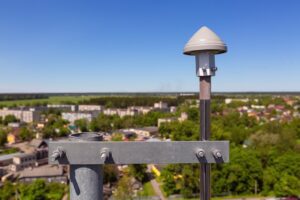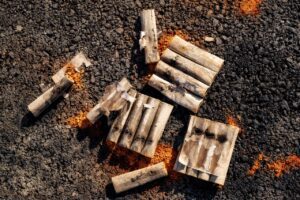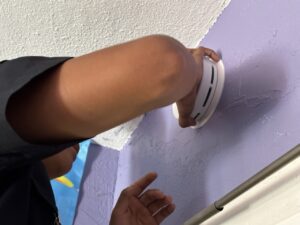This past Friday morning, Frank W. Borden passed away at the age of 82. Frank was a remarkable individual, and for those that knew him, no doubt you have lots of memories. For those that may not have known Frank, he retired as an Assistant Chief with the Los Angeles City Fire Department after 36 years of service. In his time with the LAFD, he innovated, mentored, and pursued improvements in public safety on a grand scale. Frank was directly involved in the development of the Incident Command System, and the National Urban Search and Rescue programs (now both nationally utilized).
He may be best known for his efforts to improve citizen response following a disaster. In 1986, Frank visited Japan and Mexico, eager to learn how those countries managed the after effects of earthquakes. He returned home with lots of data, and subsequently developed the Community Emergency Response Team – CERT – concept. As you all know, CERT is now a FEMA supported initiative, and is utilized throughout the world. Frank was also the Director of Operations for the LAFD Historical Society for the past 23 years – a non-profit organization that operates two museums. Cameron and I met Frank just as the Hollywood museum opened, and he was immediately welcoming and gracious. When Cameron Barrett and I conceived of a public education and awareness initiative, we presented it to the LAFDHS. While interested, their board of directors felt it was too challenging for their organization to pursue – and it was Frank Borden who pushed us to create MySafe:LA. Frank, along with William Rolland, Greg Gibson, and Dean Cathy (all former LAFD members), were instrumental in the creation of MySafe:LA.
One of Frank’s most memorable topics to share was his involvement in the Bel Air fire. At the time, Frank was a young fireman at fire station 92 on Pico Blvd. On the morning of November 5, 1961, Frank had arrived for work and was involved in the morning briefing, called “lineup” by the LAFD. In those days, the members would like up on the apparatus floor, facing the street. On this morning, as the Captain was discussing the pending action items for the day, behind him, a growing column of smoke could be seen coming from the Santa Monica Mountains. The members pointed the loomup out to their skipper, and knew they were likely to be called.

With a few minutes, Engine 92 was en route, the 1958 Seagrave fire engine’s siren wailing, and the three firefighters clinging to the tailboard watching the growing smoke column grow over Bel Air.
As the engine headed east on Mullholland Highway, the road appeared blocked by a wall of flames, blowing south into Bel Air. Firemen in the 1960s still wore dungarees while on duty, and only had turnout coats and helmets to protect them from fire. The firemen looked at each other, knowing their protection was limited.
The engine slowed, and the Captain stoof up and turned to face the three firemen riding at the back. “Hang on boys,” he shouted. “We’re going through!” With that, the engineer pressed his foot onto the accelerator, and Engine 92 dashed through the flames.
On the other side, the firemen started patting out little spot fires that appeared on the cotton hose lines, and in a few cases, swatted at flames on their dungaree pants. Minutes later, they were engaged in structure defense, although it was a losing battle, along Roscomare Road.
Frank also like to remark about a humerous little issue that occurred late in the evening, or perhaps very early in the morning on November 6. They were working the fire near where Chalon Road runs into the bottom of Roscomare Road, when a woman came out of her home – she had not evacuated. She approached the members of Engine 92, and sounding annoyed, asked, “is there any way you can work more quietly? All of this noise is making it hard to sleep!” As Frank would note, every fire had its unexpected events – and trying to sleep in the middle of a wind-driven wildfire was pretty surprising.
Frank had a wonderful knack for bringing people together – and keeping them together. When there were disagreements, Frank seemed to know how to overcome obstacles, and to find common ground upon which people could agree. He worked tirelessly to get the memorial plaza in front of Old Fire Station 27 completed, worked to develop support for the rehabilitation of Old Fireboat #2, the Ralph J. Scott, and attended countless meetings at the port, held fundraisers, and on many Fridays, joined the volunteers working on the boat in San Pedro. He was a friend to anyone who showed an interest in “community” and was loved by all that knew him. Whatever needed to be done – Frank was ready and willing.
Our most sincere condolences to his wife Raquel, and his young son, Frankie, Junior.







